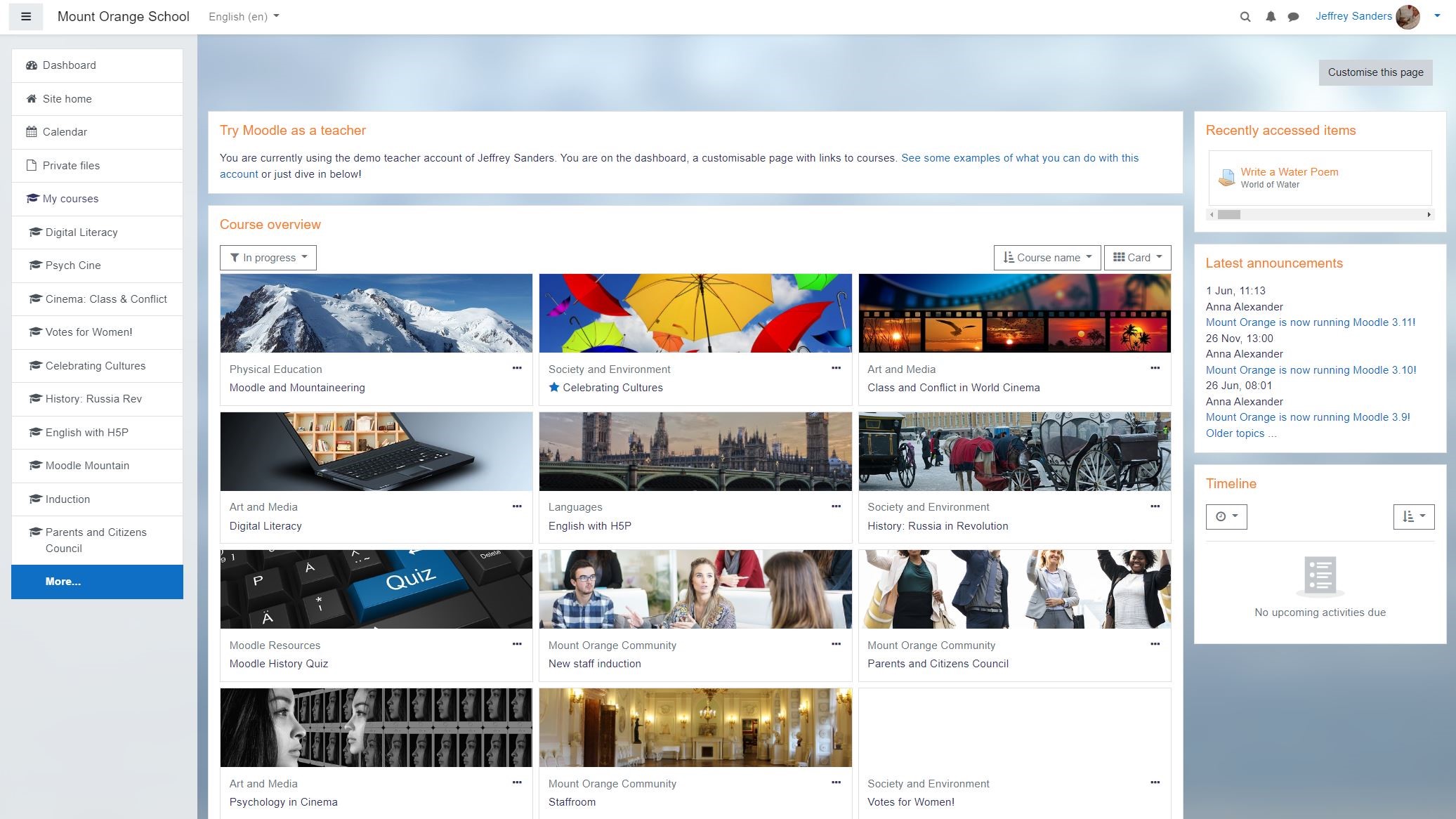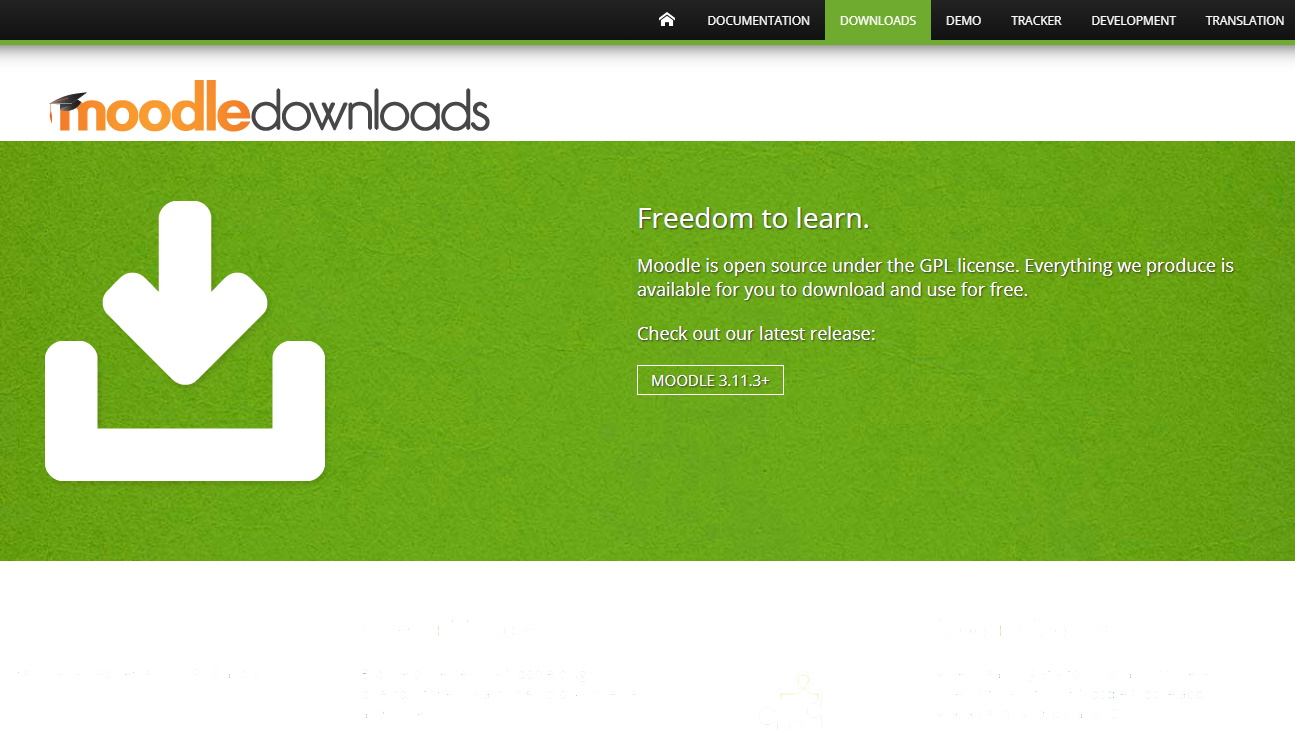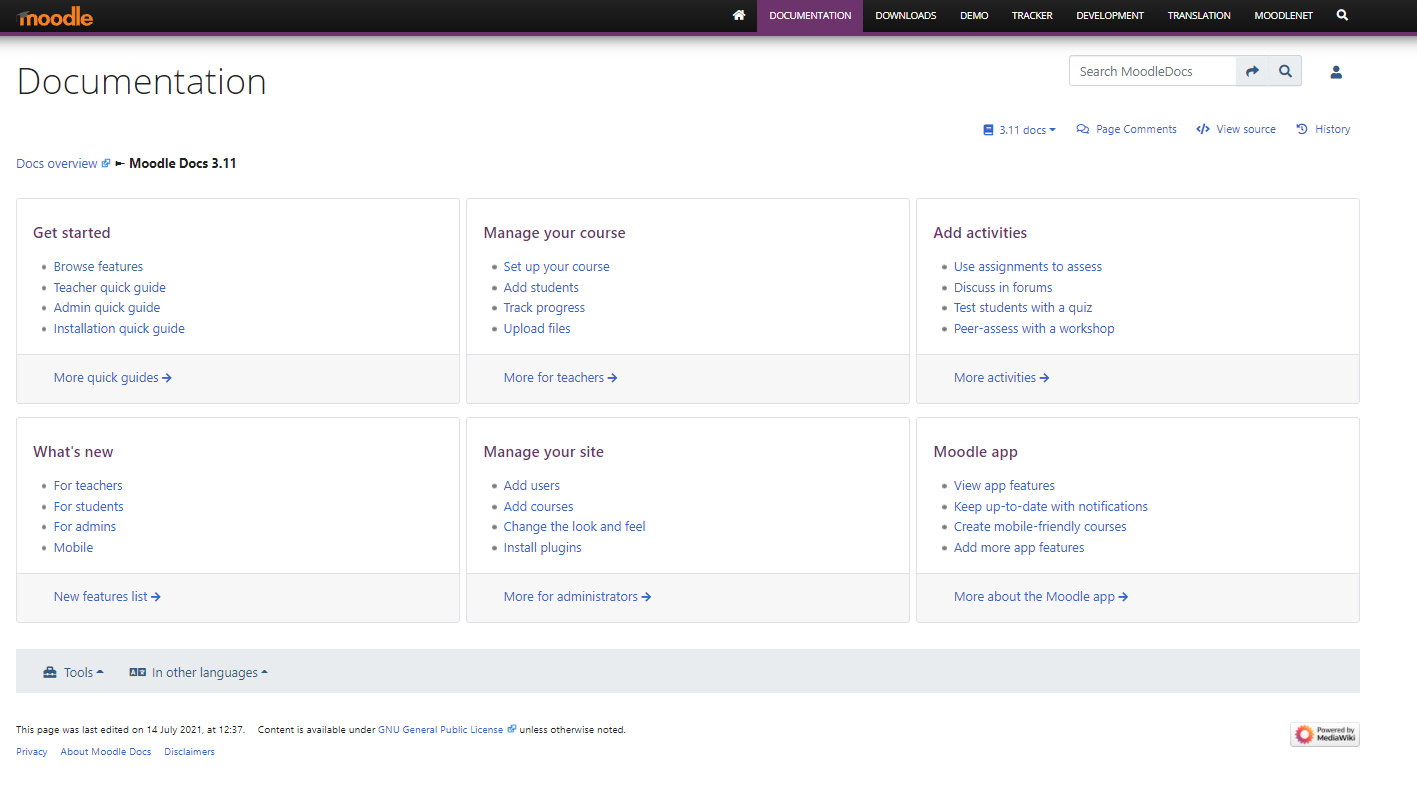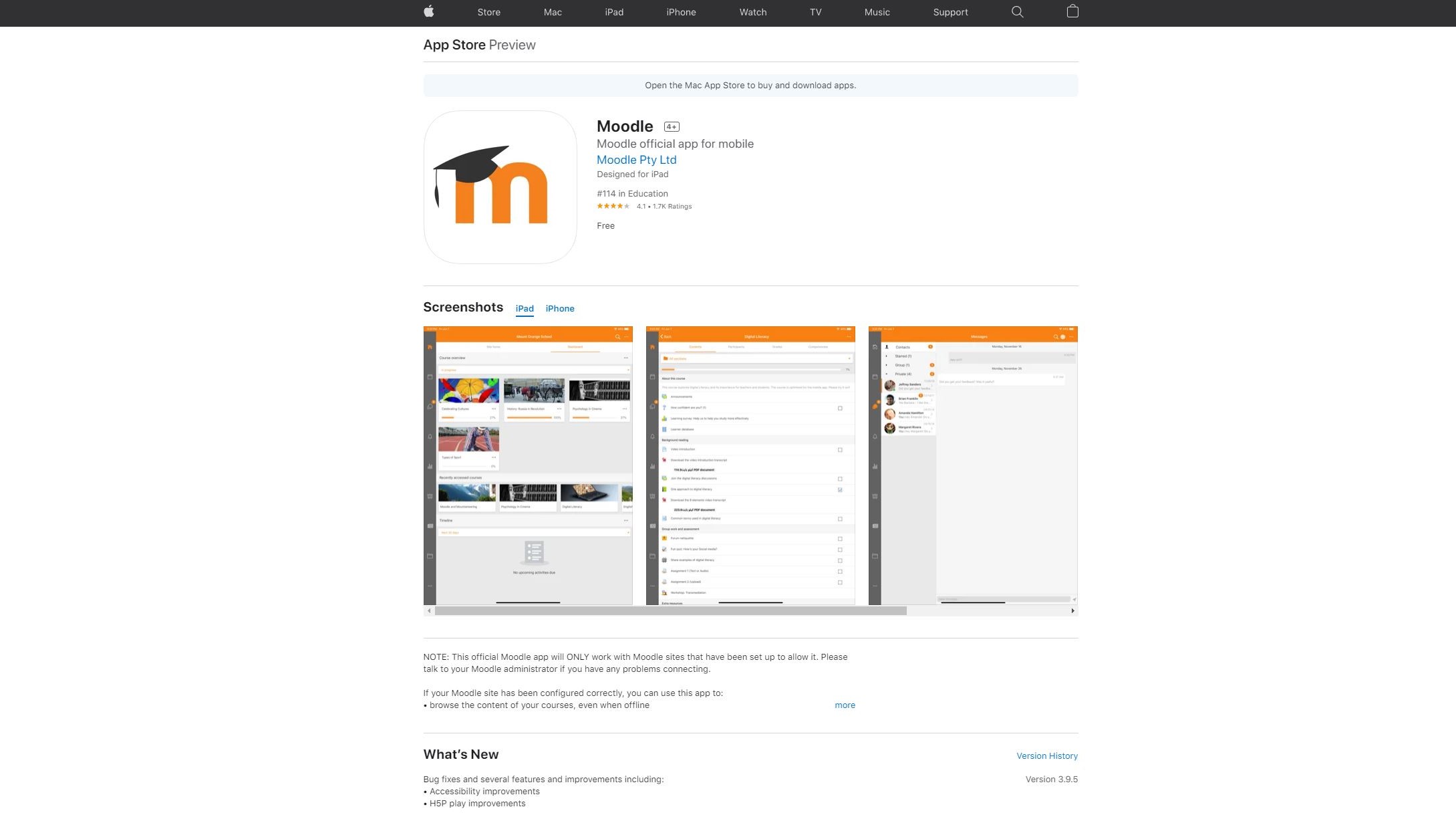Moodle LMS
Moodle is a bit of a unique prospect, as they lay claim to the “World's most popular learning management system.” Backing up the claim is that this platform has a staggering 213 million users.
- Interested in Moodle? Check out the website here
No doubt, driving this popularity is the open source software, but it is hard to argue with the success, and notable clients include the Shell corporation, the State University of New York (SUNY), and the London School of Economics.
- Also check out our roundup of the best online courses

Features
Despite the open source origin, Moodle still has plenty of features. A notable one is the modern interface, that is designed to be used via a web browser on a desktop or laptop, or on mobile platforms with available iOS and Android apps (see below). This interface includes a personalized dashboard that can display a list of courses, including the current ones, along with past courses, and future ones as well. Also displayed are the pending tasks.
There are plenty of advanced features as well that go beyond the basics. A good example is the text editor. This easy to use text editor is designed to work from within the web interface, and facilitates both formatting text, and also adding in images and other content. There is also file management, and allows users to drag and drop files from popular online cloud storage providers, such as DropBox and Google Drive. There is also an all-in-one calendar to track everything from group meetings and personal events.
Moodle also encourages collaboration among educators and among learners. To this end, there is support for a variety of activities, such as chat, wikis, forums, database activities and glossaries. Teachers can also encourage interaction, by including full quizzes, or even a single multiple choice question that is called ‘Choice.’
Teachers not only can grade an assignment online, but also can provide comments to guide the student’s learning. Surveys can also be created for learners to provide feedback and to guide lessons. Workshops can also be created to get a peer assessment.

Plans and pricing
Unlike most of the competition, Moodle is available as a free download, under the GPL license, and right on the website it says that it can be used for free. The latest release is Moodle 3.11.3+, which is for developers, and there is also a more stable Moodle 3.11.3 available as well for more general use. It is downloaded as a compressed file, as either a .tgz, or as a .zip, the latter is 73.7 MB in size in either the developer or more stable version. It is also encouraging to see that it is kept up to date, with a new version adding in bug fixes on a weekly basis. It is designed to be used on a server, but there is also another package available that can run on a Windows PC or on the Mac OS for those that want to give it a try.
Realizing that installing software on a server to run this type of service may not be for everyone as it requires a level of IT support that not all organizations have. Therefore, the software can also be setup and supported via a Moodle Certified Service Provider. There are no less than 80 options for this, so those that wish to pursue this are sure to find a partner they can work with.

A shortcoming of open source software in general is the lack of support. After all, with free software, it is hard enough to keep it up to date, let alone offer robust support.
Moodle does provide at least some level of support, although it is hardly surprising that we don’t find a toll free number, direct email address, chat, nor a support portal.
The support offered is a community forum, and it is available in multiple languages for users to help each other. There is also plenty of documentation on Moodle as well. Topics include popular topics to help new users that include “Setup your course,” “Add users,” and “Create mobile-friendly courses.”

User reviews
While there are paid learning management systems that do not have a mobile app, we are pleased to report that Moodle has both an iOS app, that is even “Designed for iPad,” and an Android app.
The iOS app gets a high rating of 4.1 out of 5 stars. There are plenty of 5 star reviews from satisfied users. On balance though, some complain of issues with a lack of notifications, randomly not working, and that the app crashed when it was updated.
The Android app gets a lower rating of 3.6 out of 5 stars. Users submitted problems with the password login with a password manager, long load times for the app, and crashes as well. Also realize that while there is an app, it needs to be enabled at the organization for it to work.
Final verdict
Moodle is the open source learning platform that does more. With its open source background, there are some compromises to be made, including the lack of direct support unless a Certified Service Provider is contracted, and that the apps are not the highest rated and have some glitches.
For those that choose this platform, they will be rewarded with a full featured platform at an open source price, that can be downloaded and run for free for those that have IT staff with skill to support this. Learners and teachers are sure to benefit from the multiplatform support, the support for quizzes forums and wikis, and the easy integration to submit assignments from 3rd party Cloud Providers such as DropBox. Given all of this, it is easy to recommend, and see why Moodle enjoys such popularity in this space.
- We've also highlighted the best online learning platforms
0 comments:
Post a Comment